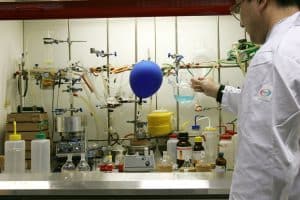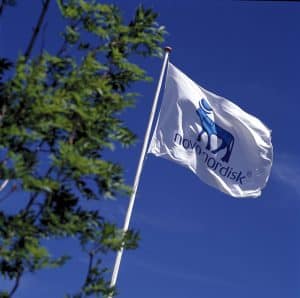Launch summery…
pharmafile | October 8, 2003 | Feature | Sales and Marketing | product launch
The summer period is traditionally a quiet time for the pharmaceutical industry, especially when it comes to product launches.
Potential marketing targets are re-adjusted to take into account the mass exodus of the GP population to foreign climes. For the pharmaceutical marketer, the period marks a time to take stock and prepare for new campaigns ahead. Logically, it would follow that companies do not launch many new products around this time. Not this year! This summer we have seen the launch of two innovative products for the treatment of debilitating illnesses: Napp Pharmaceutical's transdermal pain relief patch Transtec (buprenorphine), launched in May, and Lundbeck's SSRI antidepressant Cipralex (escitalopram), launched in June. For the purpose of the article we have benchmarked both products against Merck's second generation COX-II inhibitor Arcoxia, which was launched in May 2002. Here, Isis Research uses its Coverage and Frequency Monitor (C&F) and Launch Essential to explore how these products are faring post-launch.
Napp has a well established history in pain management, already marketing a variety of opioids and compound analgesics. Transtec is a unique transdermal therapeutic system containing buprenorphine. Patches have been used before in a variety of therapeutic areas with some success and now Napp has been able to combine an effective painkiller into a small rectangular patch. It is the first patch licensed for malignant pain and chronic, severe non-malignant pain.
CNS specialists Lundbeck launched Cipralex as a follow up to its first SSRI (selective serotonin reuptake inhibitor) antidepressant Cipramil. Cipralex differs from Cipramil in that its active ingredient, escitalopram, is the therapeutically active component of citalopram (the active ingredient in Cipramil), which is said to significantly improve symptoms and quality of life. The data from pooled studies suggests that Cipralex leads to a greater improvement in depression symptoms than Cipramil and these differences are more significant in those patients suffering from severe depression.
Napp and Lundbeck are specialised companies focusing on niche areas of the pharma industry to achieve their growth. Their new product launches are critical to the future growth of the organisations. Before we monitor the performance of these products, lets first take a look at the coverage of the companies. Coverage is defined as the proportion of all UK GPs seen at least once by a pharmaceutical sales rep in a given time period.
To gain some perspective of the launch performances, we will benchmark Transtec and Cipralex against Arcoxia. Benchmarking allows us to place these results in context and evaluate the success of launch while taking into account the differing resources of the three companies.
C&F from Isis Research monitors field force performance by analysing the number of sales contacts achieved along with coverage and repeat calling ratios. In the latest MAT (moving annual total) to June 2002 the data we see for Lundbeck and Napp gives us some idea of the performance of their respective salesforces. If we look at the coverage attained, we see that Lundbeck has visited 61% of GPs while Napp has seen 42%.
Looking into the volume of details each company has achieved in the MAT to June 2002, we see that Lundbeck has generated 51,000 details. Napp, in comparison, realised some 30,500. These differences are most probably attributed to Lundbeck's much larger field force.
Putting this into context, Merck achieved just under 120,000 sales contacts in the same MAT. Its GP coverage was one of the highest in the industry with 80% of the UK population called on at least once in the year up to June 2002.
Drawing data from Launch Essential, we see the cumulative percentage of GPs on the Launch Essential panel that were aware of Transtec, Cipralex and Arcoxia in the weeks following their launches.
The awareness for Transtec started off positively with 20% of GPs aware after four weeks, rising to 36% after 18 weeks. However, since then the awareness has flattened off slightly. Cipralex has enjoyed slightly higher awareness levels in the weeks following its launch with 52% of all panel GPs being aware of the product in just over three months. In the first four weeks, 35% were aware. When we benchmark this data against Arcoxia, 46% of GPs were aware four weeks post-launch and nearly 62% were aware after 18 weeks.
With the reasonably high awareness that we have seen for Transtec, Cipralex and Arcoxia we would expect to see similar levels of GP coverage. The data for Transtec shows a correlation with the awareness data. After four weeks, 6% had been detailed by a sales rep at the end of 18 weeks this had risen to almost 22%. Sharp increases are seen in the first few weeks after the launch of Cipralex. Lundbeck had reached Napp's 22% detailing figure after only four weeks and at the end of the 18 weeks the sales team had reached 44%. By comparing Cipralex's detailing activity with that of Merck's promotion of Arcoxia there is little disparity. The percentage of GPs detailed on Arcoxia for the first time at the end of 14 weeks was 47% compared to Lundbeck's 44%.
The C&F data coupled with the awareness and detailing figures stimulates some interesting discussion points. For instance, with a larger field force and marketing budget should Merck have recorded higher data for the awareness and detailing of Arcoxia? Or is the data we are seeing testimony to the efforts of Lundbeck and Napp in raising the profiles of their respective treatments? These questions can only really be answered by seeing how successful each product has been in generating scripts.
With the autumnal nights drawing in, it will prove interesting to see how these products fare as they are pitted against increasing competitors' sales call activity in the run up to Christmas.
Related Content

Baxter expands US portfolio with new injectables
Baxter International has announced the continued expansion of its pharmaceuticals portfolio with the launch of …

Eisai launches cancer drug Lenvatinib in Mexico
Japanese drug firm Eisai Co (TYO: 4523) said it has launched its anticancer agent Lenvima …

Novo Nordisk says its insulin pump secures EMA marketing authorisation
Diabetes drugmaker Novo Nordisk (NYSE: NYO) said it has secured European Medicines Agency (EMA) marketing …






